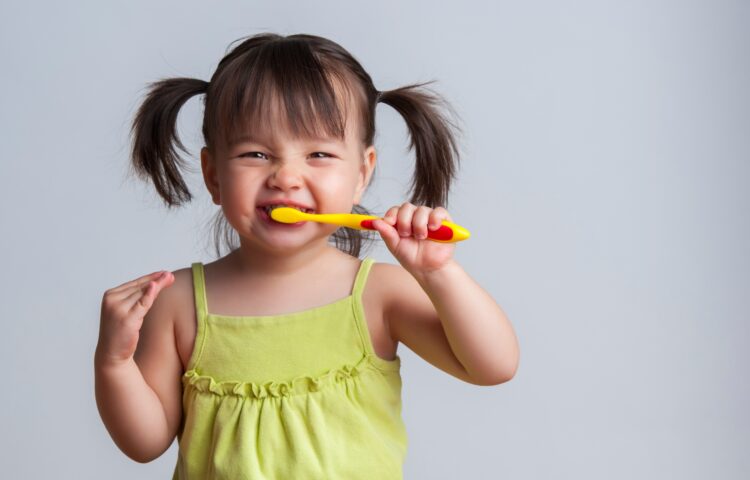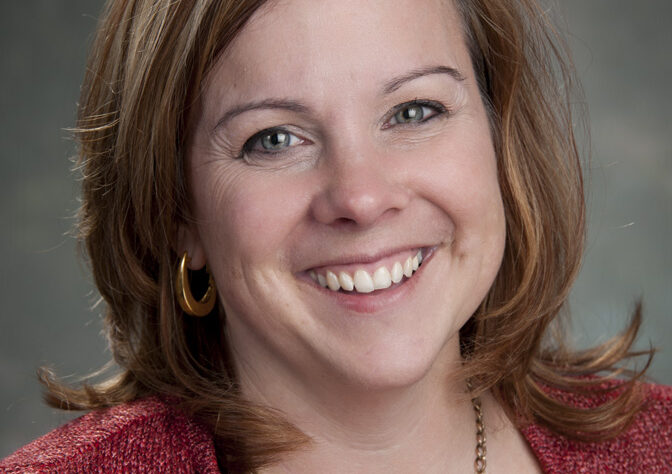When your child has good oral health, it sets them up for good health overall, and helps them with their wellness as they grow into adults. Gum disease is linked to many illnesses like heart disease, diabetes, respiratory disease, osteoporosis, and rheumatoid arthritis. Our mouths are an entryway for infection, and inflammation can let bacteria enter the bloodstream.
Oral health affects your child’s speech, how they eat, and their ability to smile and show emotions. It also influences a kid’s self-esteem, academics and school attendance. Starting them off with healthy habits to care for their mouths is essential in preventing oral and other chronic illnesses in the future.
Protect Tiny Teeth As Soon As Possible
Your baby’s teeth are hiding just beneath their gums as soon as they are born. Every baby is different, but usually the first teeth to appear are in the top and bottom front of their mouth. They usually start to come in anytime between 4 months and 12 months of age. But the arrival of teeth comes with the potential for tooth decay. When you see a tiny tooth peeking out of your baby’s gums, that means it’s time to begin caring for it.
Here’s what you can do to protect tiny teeth before and after they’ve come in:
- Start cleaning baby’s mouth at a few days old. Wipe the gums with a soft, clean, moist gauze pad or washcloth after each feeding.
- When baby is ready for solids, choose foods with no added sugar.
- Brush baby’s teeth as soon as they appear, twice per day (morning and night) using a soft-bristled brush with fluoride toothpaste in the size of a grain of rice.
- To find the best toothpaste for your child, use the ADA Seal of Acceptance.
Besides helping your baby chew, speak and smile, baby teeth also hold space in their jaw for the permanent teeth that are growing under their gums. When your baby loses a tooth too early, a permanent one can drift into the empty space making it difficult for others to find room when they come in. This is one of the reasons that adult teeth can be crooked or crowded.
One of the main causes of tooth decay in babies and toddlers is from exposing their teeth to drinks that contain sugar. This is especially the case if they sleep with a bottle or it’s used as a pacifier. Also, remember that bacteria from your mouth can introduce germs to your child. For instance, if your baby’s pacifier falls on the floor, don’t pick it up and put it in your mouth to clean it; the bacteria that causes cavities can pass through your saliva to theirs. The same is true for food. Try not to offer them a bite of your food or serve them from your utensils.
Your little one should see the dentist by their first birthday. At this visit, the dentist will do the following:
- Check your baby’s teeth;
- Show you the best way to clean your little one’s teeth;
- Talk to you about other ways to keep your child’s mouth healthy like healthy diet, fluoride, and dental sealants.
If you’re not sure about a dentist for your baby, ask your pediatrician to check their teeth and for a dental referral.
Growing Into Good Oral Health Habits
Tooth decay, or cavities, is still one of the most common chronic diseases for kids from age 6 to 19. About 1 in 5 (20%) children aged 5 to 11 years have at least one untreated decayed tooth. And 1 in 7 (13%) adolescents (aged 12-19) have at least one untreated decayed tooth.
Most children have a full set of 20 primary teeth by the time they are three years old.
Cleaning your child’s teeth shouldn’t be difficult. If your child is 3 or younger, use a smear of toothpaste (about the size of a grain of rice) on a child-sized toothbrush. For children 3 or older, use a pea-sized amount of fluoride toothpaste. Be sure they spit out the toothpaste rather than swallowing it. Monitor their brushing until around age 6 or until they’ve mastered the skill.
Other ways you can help ensure your child has the healthiest mouth possible:
- Feed them healthy foods like fruits and vegetables and avoid sugary snacks like cookies and gummy candies. Even pretzels and crackers are particularly bad for baby’s teeth.
- Have them drink water, preferably tap water that contains fluoride.
- Clean between their teeth before or after brushing. Kid-friendly plastic flossing tools make it easier until your child learns how or is old enough to floss themselves.
- Talk to their dentist or school about dental sealant options. Sealants provide an extra barrier between cavity-causing bacteria and teeth, reducing the risk of tooth decay by about 80% in molars.
The Truth About Fluoride
You may have heard that fluoride is dangerous, but there is no scientific evidence to prove this. In fact, drinking water with fluoride has been shown to reduce cavities by 25%.
Fluoride is a mineral that occurs naturally in all water sources, including oceans, rivers and lakes. It is safe and effective at preventing tooth decay and is added to some community tap water, toothpastes and mouth rinses. Fluoride strengthens tooth enamel, helping it resist the acid that can cause tooth decay. It also reduces the ability of plaque bacteria to produce acid.
Check with your local water utility agency or find out here if your community’s water is fluoridated. Be aware that bottled water may not contain fluoride; therefore, children who drink it or unfluoridated tap water regularly may be missing the benefits of fluoride. Ask your pediatrician or dentist if your child should get a prescription for fluoride drops or chewable tablets.



